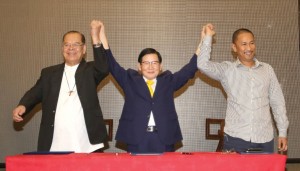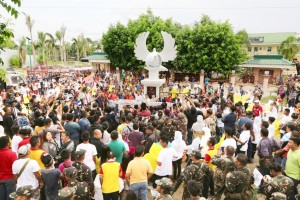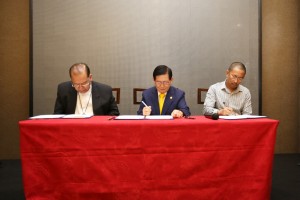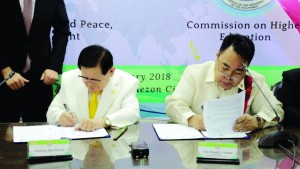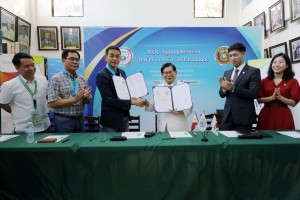Chicago, Illinois Jun 21, 2022 (Issuewire.com) - The hope of peace is constant in the Republic of Korea, especially as the reverberation of the invasion of Ukraine by Russia has renewed the fear that the North will one day wage an attack. As the war in Ukraine broke out, Koreans begin to once again have a desperate need for peace.
Heavenly Culture, World Peace, Restoration of Light (HWPL), an international peace organization in Korea is engendering a new culture of world peace by hosting dialogues and birthing numerous peace initiatives in education and religious institutions and organizations.
The most notable achievement of HWPL is contributing to peace in Mindanao, Philippines. Chairman Man Hee-lee was instrumental in helping end the 40-year conflict by creating comradery with many religious groups and private institutions, grounding the peace agreement in the culture and citizenship of the Philippines. This became a blueprint for peace initiatives that could be transferred to other Asian nations with similar conflicts.
In 2013 tensions were high due to reignited military clashes between the government and the Moro Islamic Liberation Front (MILF), the largest armed resistance group in Southeast Asia. Though the MILF’s initial intention was honorable, combatting political, cultural and economic discrimination stemming from the colonial period of Spain and the West, the Philippine government declared war with the militant group. After over hundred-thousand casualties, many institutions and international NGOs supported a peaceful resolution, and on January 24, 2014, a government-MILF peace agreement was drafted.
Mindanao Peace Declaration, HWPL Mindanao Peace Agreement
In 2013, an HWPL representative visited Mindanao to conclude a peace agreement between Mindanao's local leaders and non-governmental organizations. He summoned Catholic-Islamic officials and urged them to stop the conflict and do their best for reconciliation and cooperation for peace. After the signing of the End of War and World Peace Agreement, two leaders representing local Islam and Catholicism, government and private sector, politics and religion joined hands. With this declaration, January 24 of every year has become the anniversary of the peace agreement in Mindanao. The significance of the January 24 agreement lies in that it became the cornerstone of a peace movement in which HWPL and the Philippine social leaders, as well as citizens, jointly developed the spirit of reconciliation and coexistence.
HWPL Peace Efforts Today Go Beyond Mindanao
The world has made efforts to resolve conflicts and establish peace, but in recent decades, there has been a major change in the origins of conflicts. After the end of the Cold War, ethnic and religious identities that had been bound by ideology emerged as a source of conflict. Ethnic and religious conflicts have increased significantly, accounting for more than 80% of conflicts that occur worldwide. This shift in conflicts requires a new approach to problem-solving.
At the regional level, from 2019 to 2020, major cities in Mindanao, such as Cotabato City and Davao City, have resolved to support and implement the “Declaration of Peace and the Cessation of War” (DPCW) announced by HWPL The DPCW has been developed and functions as an international legal document with legal, institutional and normative functions by international organizations, central and local governments, and civil society.
At the national level, efforts to establish peace through cooperation with central government ministries in the field of education are expanding. HWPL has been implementing peace education at the international level suggested by the United Nations and UNESCO to students and citizens in the Philippines, starting with the signing of a memorandum of understanding (MOU) with 70 educational institutions in Mindanao in February 2016. Citizen education focusing on character development in line with the era of peace is a recent international educational trend. Several national committees of UNESCO have also signed MOUs with HWPL and are beginning to introduce peace education.
In the Philippines, in 2018, an MOU was signed with the Commission on Higher Education (CHED), an organization under the direct control of the president, and in cooperation with the Ministry of Education, the nation-wide education curriculum for peace education and the training of the education is being expanded. Through this cooperation, 2,551 teachers from 557 educational institutions are trained in the Philippines alone, contributing to peace education for 23,000 students (200 teachers and 5,000 students in Mindanao).
The Chairman of the HWPL, Lee Man-hee always emphasizes, "Let's all become messengers of peace and leave peace as a legacy for future generations." The possibility of peace emphasized by HWPL will become a reality when people around the world take the lead and become shepherds of peace.
For more news on the Mindanao work through HWPL, please visit: http://news.hwpl.kr/en/news/view/190301376/SpecialBondofPeacethatTiesMindanaoandHWPLTogether
Media Contact
HWPL Chicago hwplchicago1@gmail.com 2696263185 http://hwpl.kr
